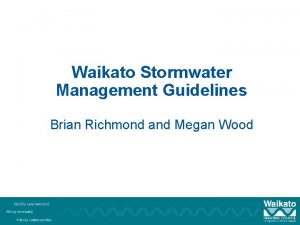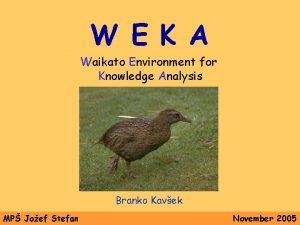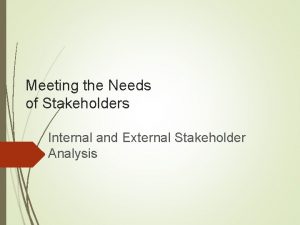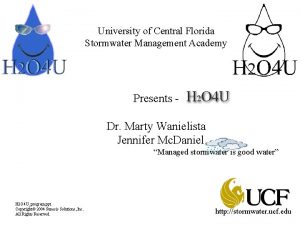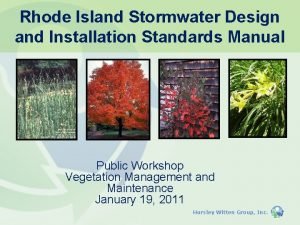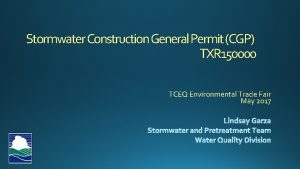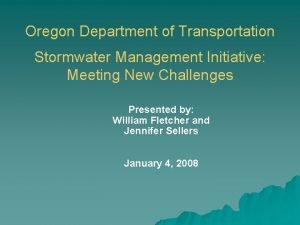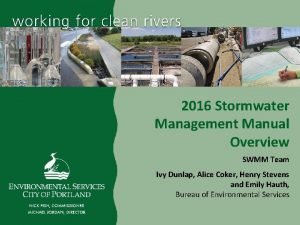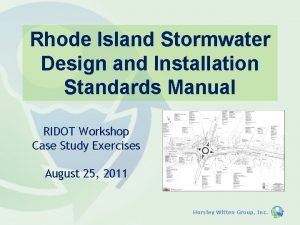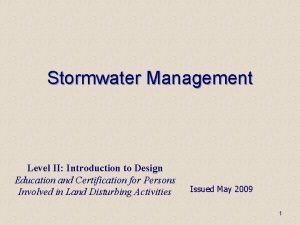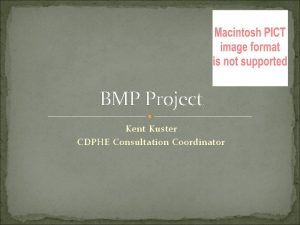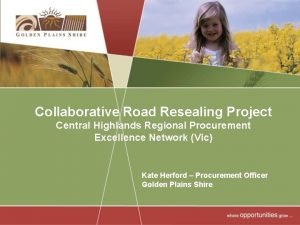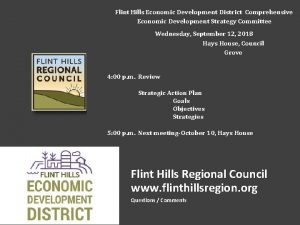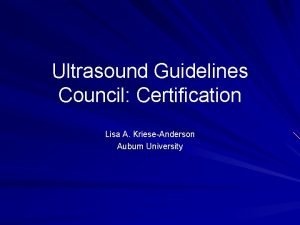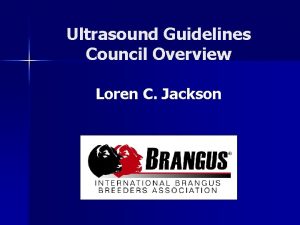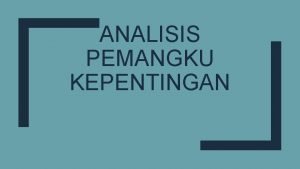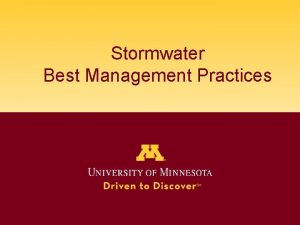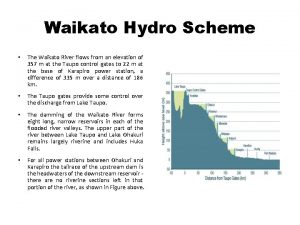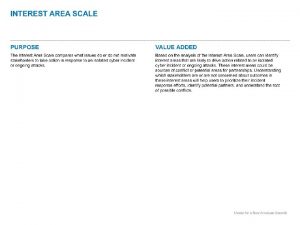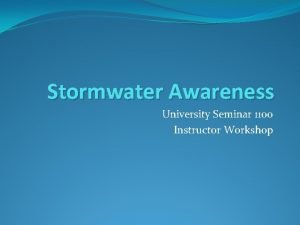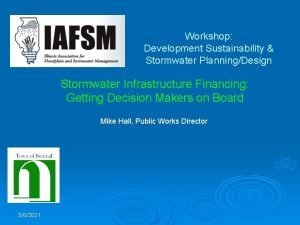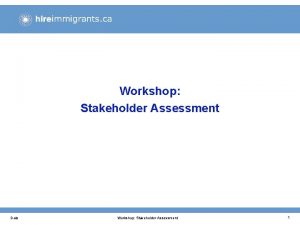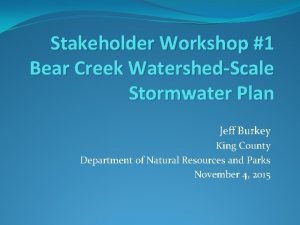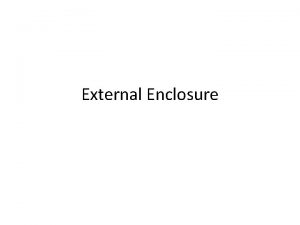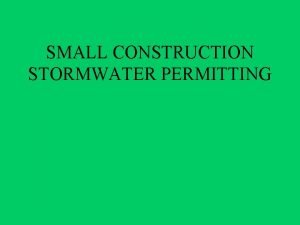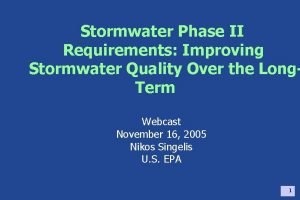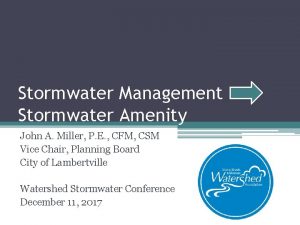Waikato Regional Council Stormwater Guidelines External Stakeholder Workshop




















- Slides: 20

Waikato Regional Council Stormwater Guidelines External Stakeholder Workshop 1 Earl Shaver from Aqua Terra International Limited

Introductions Housekeeping - please switch cell phones off - the intent of this workshop is to be interactive. Please don’t be afraid to interact, ask questions or make comments - emergencies Course Content - highlights of the two guidelines - Workshop starts at 9 and concludes prior to 1300.

Draft Waikato Guideline for Stormwater Runoff Modelling

Background There is value in having a common hydrologic design approach used by the design community that ensures consistency throughout a catchment and the region. Waikato Regional Council has historically been using the Auckland Regional Council’s Technical Publication No. 108 (TP 108) “Guidelines for Stormwater Runoff Modelling in the Auckland Region” for stormwater runoff modelling in the Waikato Region. This has worked satisfactorily but has been jeopardised, as the Auckland Council no longer supports the use of TP 108 for stormwater modelling in the Auckland Region (is my perception still correct? ). As a result, it is important that the Waikato Regional Council have a stormwater modelling guideline for use throughout the region that is a council guideline. Any future changes can be made locally without having to rely on hydrological guidelines developed elsewhere.

Changes from TP 108 • Use of NIWA HIRDS Version 3 for rainfall information (Hamilton City Council uses locally derived rainfall data), • Requirement for soil testing to determine hydrologic soil groupings, • Allowance for models other than detailed in this guideline, • Dual classification of soils if soils are drained to lower the water table, and • A requirement for post-development rainfalls to include climate change.

Alternative models there is scope if a consultant or other entity wants to use an alternative method or hydrologic model to be considered by the regional council. The consultant must be able to demonstrate that the model or method is robust and provides comparable outputs.

Basis for the design approach This guideline presents a recommended use of the U. S. Soil Conservation Service rainfall-runoff model for stormwater management purposes in the Waikato Region. It is based on Technical Release No. 55 (TR 55) prepared by the U. S. Soil Conservation Service (SCS, 1986), which is now known as the Natural Resources Conservation Service (NRCS). The model provides a robust hydrological design approach that is reasonable to use and generally accepted by the engineering community.

Model accuracy The model has not been verified in Waikato catchments in a similar fashion as was done in the Auckland Region. It is anticipated that the results would be similar to those in Auckland as rainfall in the Waikato Region tends to be fairly consistent throughout the region (excepting that Coromandel has greater seasonal fluctuation than other areas) and differences from the Auckland rainfall are expected to be minor. The model provides reasonable estimates of the difference between pre - and post-development for flows and volumes. The pre- and post-development peak flow rates and volume determination done is a transparent manner that most consultants can use is the key reason why this model was selected for use.

Analytical Overview • Mass rainfall is converted to mass runoff by using a runoff curve number (CN), which is based on soils, ground cover, amount of impervious areas, interception and surface storage. • Design 24 -hour rainfall depths are provided using the National Institute of Water and Atmospheric Research (NIWA) High Intensity Rainfall Design System (HIRDS), Version 3 (2010). For projects in Hamilton, designers should be aware that Hamilton City Council (HCC) uses local rainfall data that should be used for projects in the City. • Climate change must be accounted for in the postdevelopment calculations to determine storage requirements for stormwater management practices. • A standard 24 -hour temporal rainfall pattern, having peak rainfall intensity at mid-duration. Shorter duration rainfall bursts with a range of durations from 10 minutes to 24 hours are nested within the 24 -hour temporal pattern

Limitations of the model • The procedures of the model have been simplified by assumptions about some parameters. These simplifications, however, limit the use of the procedures and can provide results that are less accurate than more detailed methods. The user should examine the sensitivity of the analysis to a variation of the peak discharge or hydrograph to ensure that any errors are tolerable. • The methods of the model are based on open and unconfined flow overland or in channels. • Rainfall loss and runoff timing parameters have been validated for ‘clayey’ (weathered mudstone and sandstone) and ‘volcanic’ (granular loams, and loams underlain by fractured basalt) soil types. Other soil types should be modelled by interpolating the soil classification or, more preferably, based on site soils testing. Subsection 5. 3 of the draft guidelines describes four hydrologic soil classifications and has applicable hydraulic conductivity limits for each soil classification. On-site testing will identify which soil classification is appropriate for each site based on the parameters discussed in Section 5. 3. • The model is applicable to both rural and urban catchments.

Initial abstraction (Ia) accounts for all losses before runoff begins. It includes water retained in surface depressions, water intercepted by vegetation, evaporation and infiltration. Ia is highly variable but generally is correlated with soil and cover parameters. Data from Auckland catchments with a wide range of soil types indicate that constant initial abstraction depths are more appropriate. The following values in Table 2 have been derived from the calibration and should be used for pervious and impervious areas. Pervious area Ia (mm) 5 Impervious area 0

Soil storage parameter The soil storage parameter relates to soil and land use conditions of the catchment through the curve number, CN: Where S = potential maximum retention after runoff begins (mm) CN ranges from 0 for zero runoff to 100 for total runoff. The family of rainfall – runoff curves is shown in the following figure for Ia = 0 and 5 mm.

Rainfall runoff curves

Curve numbers The major factors that determine CN are the hydrologic soil group (HSG), cover type, treatment, hydrologic condition and antecedent runoff condition. The following table presents most commonly used curve numbers for urban and rural catchments. Curve numbers for catchments in the Waikato Region should be selected using this table according to the values presented on the next slide.

Cover description Cover type and hydrologic condition Hydrologic condition A B C D Poor Fair 68 49 79 69 86 79 89 84 Good 39 61 74 80 98 98 83 89 92 93 Poor 76 72 68 85 82 79 89 87 86 91 89 89 Fair 49 69 79 84 Good Poor 39 72 61 81 74 88 80 91 Good Bush – bush-weed-grass mixture with bush Poor being the major element Fair 67 48 78 67 85 77 89+ 83 35 56 70 77 Good Poor 30 57 48 73 65 82 73 86 Fair 43 65 76 82 Good Poor 32 45 58 66 72 77 79 83 Fair 36 60 73 79 Good 30 59 55 74 70 82 77 86 Fully developed urban areas (vegetation established) Open space (lawns, parks, reserves, etc. ) Condition (grass cover < 50%) Fair condition ( grass cover 50%75%) Runoff Curve numbers to use Good condition (grass cover >75%) Impervious areas Paved parking lots, roofs, driveways, etc. Streets and roads* Paved; kerbing and catchpits (excluding right-of-way) Paved; open ditches (including right-of-way) Gravel (including right-of-way) Dirt (including right-of-way) Pasture, grassland, or range – continuous forage for grazing Straight row crops Bush – grass combination (orchard or tree farm) Bush** Farmsteads – buildings, lanes, driveways,

Hydrological soil groups (HSG) The following discussion of soil group A and B soils are two examples of the criteria detailed in the guidelines for all four soil groups. Group A soils Soils in this group have low runoff potential when thoroughly wet. Water is transmitted freely through the soil. Group A soils typically have less than 10% clay and more than 90% sand or gravel and have gravel or sand textures. Some soils having loamy sand, sandy loam, loam or silt loam textures may be placed in this group if they are well aggregated, of low bulk density, or contain greater than 35% rock fragments. The limits on the diagnostic physical characteristics of Group A are as follows: • • The saturated hydraulic conductivity of all soil layers exceeds 40. 0 micrometres/second (µm/s) or 144 mm/hour. The depth to any water impermeable layer is greater than 50 cm. The depth to the water table is greater than 60 cm Soils that are deeper than 1 m to a water impermeable layer and a water table are in Group A if the saturated hydraulic conductivity of all soil layers within 1 m of the surface exceeds 10 µm/s.

Group B soils Soils in this group have moderately low runoff potential when thoroughly wet. Water transmission through the soil is unimpeded. Group B soils typically have between 10% and 20% clay and 50% to 90% sand have loamy sand or sandy loam textures. Some soils having loam, silt, or sandy clay loam textures may be placed in this group if they are well aggregated, of low bulk density or contain greater than 35% rock fragments. The limits on the diagnostic physical characteristics of Group B are as follows: • • The saturated hydraulic conductivity in the least transmissive layer between the surface and 50 cm ranges from 10 to 40. 0 µm/s or 36 mm/hr to 144 mm/hr. The depth to any water impermeable layer is greater than 50 cm. The depth to the water table is greater than 60 cm Soils that are deeper than 1 m to a water impermeable layer and a water table are in Group B if the saturated hydraulic conductivity of all soil layers within 1 m of the surface exceeds 4. 0 µm/s but is less than 10 µm/s. Group C and D soils have their own criteria for saturated hydraulic conductivity.

Dual soil classification Certain wet soils are placed in Group D based solely on the presence of a water table within 600 mm of the surface even though the saturated hydraulic conductivity may be favourable for water transmission. If these soils can be adequately drained, then they are assigned to dual hydrologic soil groups (A/D, B/D, C/D) based on their saturated hydraulic conductivity and the water table depth when drained. The first letter applies to the drained condition and the second to the undrained condition. For the purpose of hydrologic soil group, adequately drained means that the seasonal high water table is kept at least 600 mm below the surface in a soil where it would be higher in a natural state.

Assignment of hydrologic soil group (HSG) Depth to water impermeable layer 1 < 50 cm Depth to high water table 2 - < 60 cm 50 cm to 1 m ≥ 60 cm < 60 cm >1 m 60 cm to 1 m >1 m Ksat of least transmissive layer in depth range > 40. 0 µm/s > 10. 0 to ≤ 40. 0 µm/s. 1. 0 to ≤ 10. 0 µm/s Ksat depth range HSG 3 0 to 60 cm D A/D B/D 0 to 60 cm C/D ≤ 1. 0 µm/s > 40 µm/s > 10. 0 to ≤ 40 µm/s > 1. 0 to ≤ 10 µm/s ≤ 1. 0 µm/s > 10 µm/s > 4. 0 to ≤ 10. 0 µm/s > 0. 40 to ≤ 4. 0 µm/s ≤ 0. 4 µm/s > 40. 0 µm/s > 10. 0 to ≤ 40. 0 µm/s > 1. 0 to ≤ 10. 0 µm/s ≤ 1. 0 µm/s > 10. 0 µm/s > 4. 0 to ≤ 10. 0 µm/s > 0. 40 to ≤ 4. 0 µm/s ≤ 0. 40 µm/s 0 to 60 cm 0 to 50 cm D A B 0 to 50 cm 0 to 1 m C D A/D B/D 0 to 1 m C/D 0 to 1 m 0 to 50 cm D A B 0 to 50 cm C 0 to 50 cm 0 to 1 m D A B 0 to 1 m C 0 to 1 m D

In order to analyse pre and post-development hydrology it is necessary to accomplish four different development scenarios. They include: • • Pre-development site analysis where the pre-development land use is assessed to obtain pre-development 2 and 10 -year peak discharges (normally). Post-development site analysis where the impervious and pervious areas are grouped to determine post-development 2 and 10 -year peak discharges. Post-development site analysis of the impervious surfaces only to obtain post-development water quality, 2 and 10 -year total storm volumes for impervious surfaces and peak discharge for the water quality storm (for swales and filter strips only). Post-development site analysis of the site pervious areas to obtain post-development water quality, 2 and 10 -year total storm volumes for pervious surfaces and peak discharge for the water quality storm (for swales and filter strips only). Climate change must be included in all post development rainfall events.
 Waikato stormwater management guideline
Waikato stormwater management guideline Waikato dhb ransomware
Waikato dhb ransomware Slidetodoc
Slidetodoc Weka waikato
Weka waikato Stakeholders internal and external
Stakeholders internal and external Stakeholder map internal external
Stakeholder map internal external Ucf stormwater academy
Ucf stormwater academy Ri stormwater manual
Ri stormwater manual Tpdes construction general permit
Tpdes construction general permit Stormwater
Stormwater Portland stormwater management manual
Portland stormwater management manual Rhode island stormwater manual
Rhode island stormwater manual Stormwater management
Stormwater management Cdphe stormwater
Cdphe stormwater Central highlands regional council tenders
Central highlands regional council tenders Flint hills regional council
Flint hills regional council Ultrasound guidelines council
Ultrasound guidelines council Carcass ultrasound technician training
Carcass ultrasound technician training External-external trips
External-external trips Sumwear
Sumwear Analisis pemangku kepentingan
Analisis pemangku kepentingan
